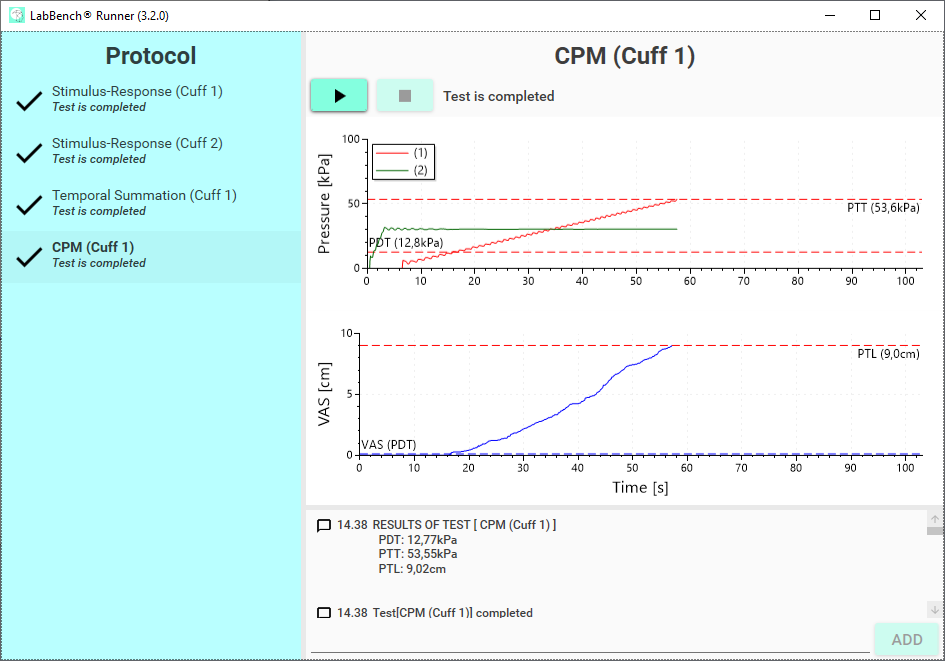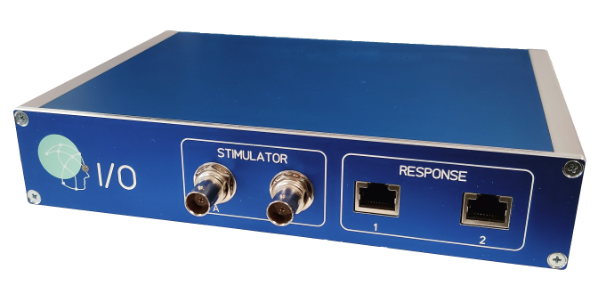Strength-Duration Curves
Strength-duration (SD) curves are performed by determining the threshold to electrical stimuli of increasing duration. The durations typically range from 50us to 2ms. From the SD curve, the chronaxie and rheobase can be determined. The rheobase is the minimum current that can elicit a response to a pulse of infinite duration. The chronaxie is the minimum duration that can elicit a response when the intensity of the pulse is two times the possible. Consequently, the chronaxie measures the slope of the SD curve. An alternative measurement for the slope of the SD curves is the strength-duration time constant.
Threshold Electrotonus
With threshold electrotonus, nerve fibers are conditioned with long duration subthreshold pulses of typically 100ms in duration. The test consists of determing the minimal intensities that will elicit a response to a short duration test pulse of typically 1ms in duration. The test pulse is given at an inter-stimulus-interval from the onset of the conditioning pulse ranging from typically 0ms to 200ms.
Accommodation Curves
Accommodation curves are performed by determining the minimal intensity that will evoke a response to ramps. The ramps have a typical duration from 1ms to 200ms.

